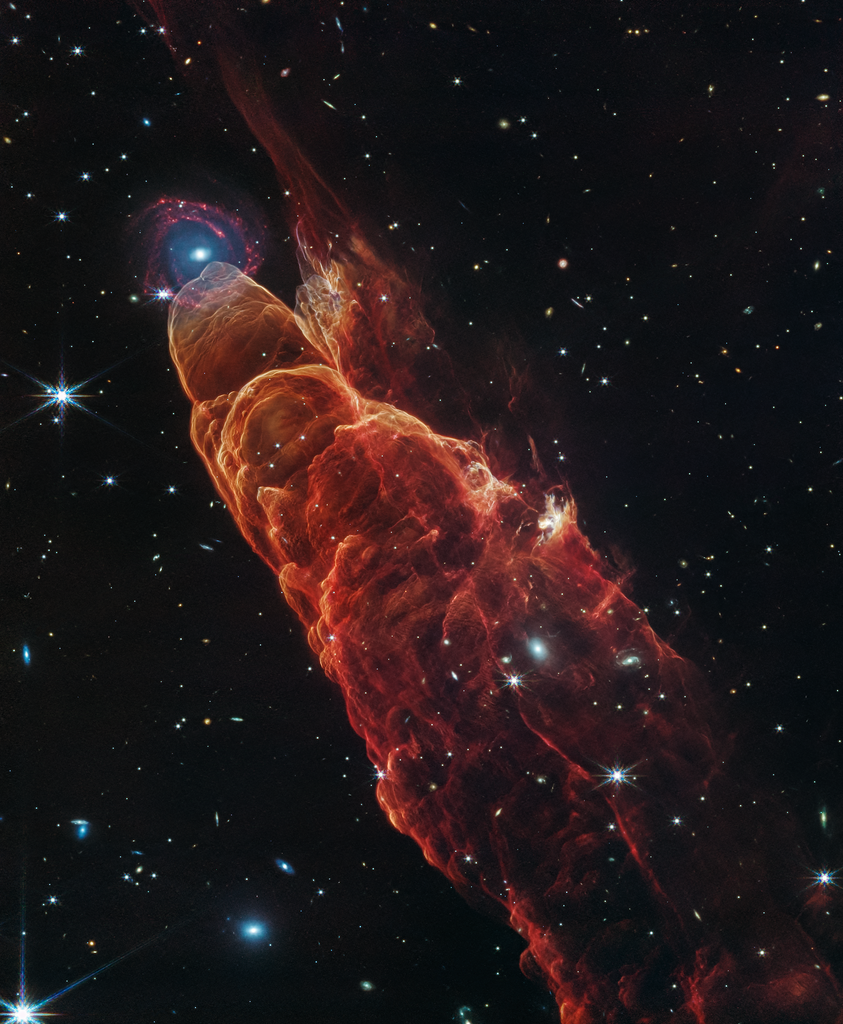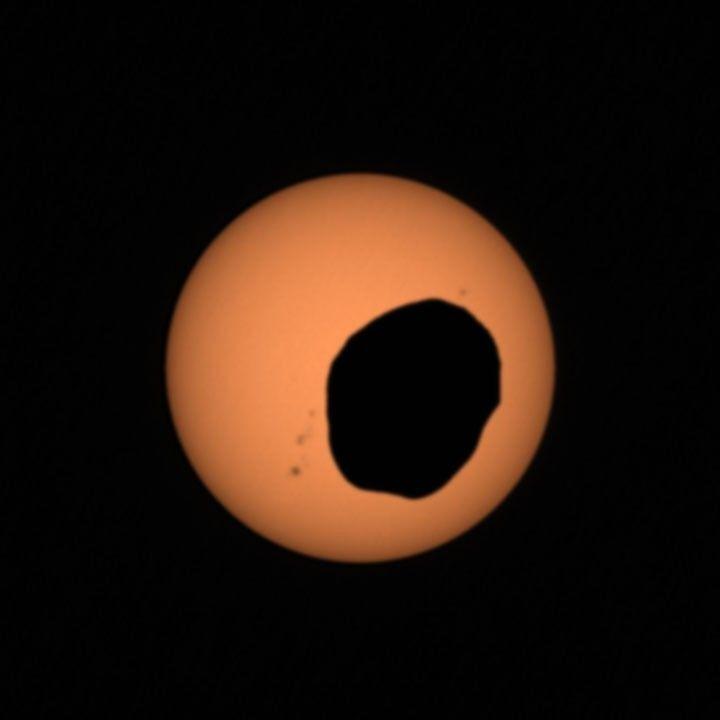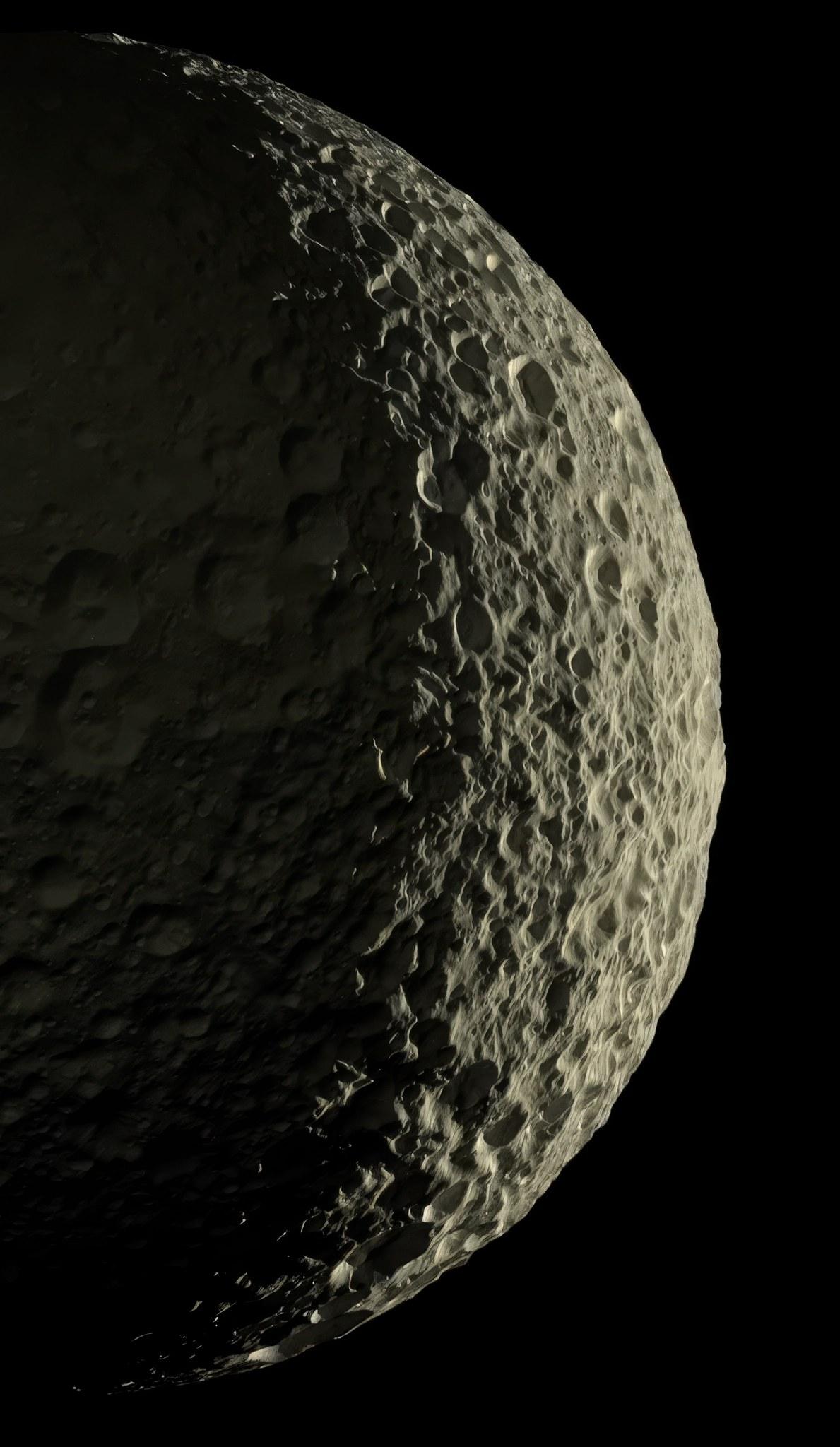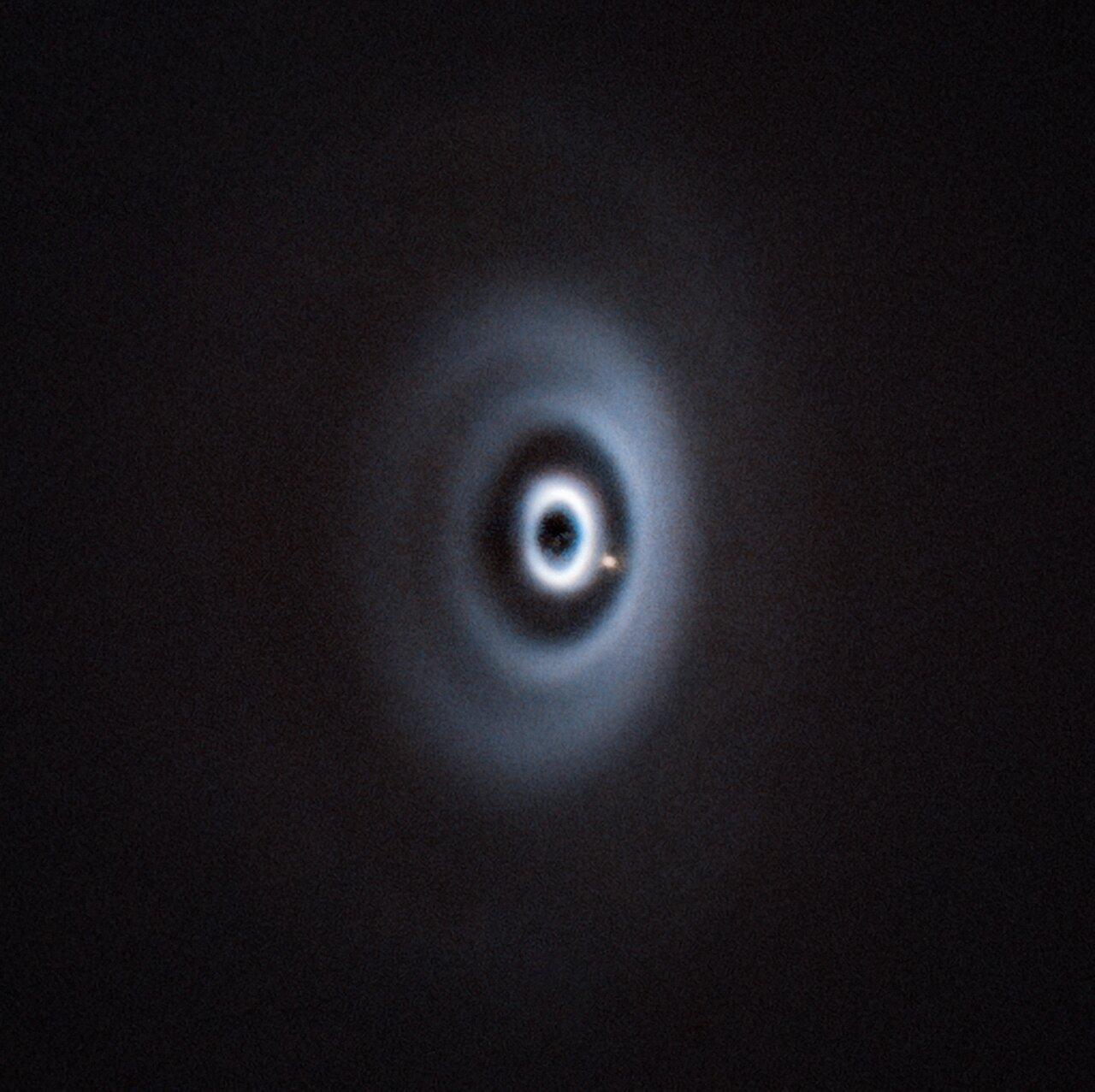#PPOD: NASA’s JWST observed Herbig-Haro 49/50, an outflow from a nearby still-forming star, in high-resolution near- and mid-infrared light. The young star is off to the lower right corner of the image. The intricate features of the outflow, represented in a reddish-orange color, provide detailed clues about how young stars form and how their jet activity affects the surrounding environment. Credit: NASA, ESA, CSA, STScI
#PPOD: NASA’s JWST observed Herbig-Haro 49/50, an outflow from a nearby still-forming star, in high-resolution near- and mid-infrared light. The young star is off to the lower right corner of the image. The intricate features of the outflow, represented in a reddish-orange color, provide detailed clues about how young stars form and how their jet activity affects the surrounding environment. Credit: NASA, ESA, CSA, STScI
#PPOD: The interaction of two doomed stars has created this spectacular ring adorned with bright clumps of gas – a diamond necklace of cosmic proportions. Fittingly known as the “Necklace Nebula,” this planetary nebula is located 15,000 light-years away from Earth in the small, dim constellation of Sagitta (the Arrow). Credit: ESA/Hubble & NASA, K. Noll
#PPOD: The interaction of two doomed stars has created this spectacular ring adorned with bright clumps of gas – a diamond necklace of cosmic proportions. Fittingly known as the “Necklace Nebula,” this planetary nebula is located 15,000 light-years away from Earth in the small, dim constellation of Sagitta (the Arrow). Credit: ESA/Hubble & NASA, K. Noll
#PPOD: NASA’s Perseverance Mars rover used its Mastcam-Z camera system to shoot video of Phobos, one of Mars’ two moons, eclipsing the Sun. It’s the most zoomed-in, highest-frame-rate observation of a Phobos solar eclipse ever taken from the Martian surface. This image is a still taken from that video, which was shot in April 2022. Credit: NASA/JPL-Caltech/ASU/MSSS/SSI
#PPOD: NASA’s Perseverance Mars rover used its Mastcam-Z camera system to shoot video of Phobos, one of Mars’ two moons, eclipsing the Sun. It’s the most zoomed-in, highest-frame-rate observation of a Phobos solar eclipse ever taken from the Martian surface. This image is a still taken from that video, which was shot in April 2022. Credit: NASA/JPL-Caltech/ASU/MSSS/SSI
#PPOD: During its close flyby of Jupiter’s moon Io on December 30, 2023, NASA’s Juno spacecraft captured some of the most detailed imagery ever of Io’s volcanic surface. In this image, taken by the JunoCam instrument from about 1,500 kilometers above the moon, Io’s night side [left lobe] is illuminated by “Jupitershine,” which is sunlight reflected from the planet’s surface. Credit: NASA/JPL–Caltech/SwRI/MSSS; Image processing: Emma Wälimäki © CC BY
#PPOD: During its close flyby of Jupiter’s moon Io on December 30, 2023, NASA’s Juno spacecraft captured some of the most detailed imagery ever of Io’s volcanic surface. In this image, taken by the JunoCam instrument from about 1,500 kilometers above the moon, Io’s night side [left lobe] is illuminated by “Jupitershine,” which is sunlight reflected from the planet’s surface. Credit: NASA/JPL–Caltech/SwRI/MSSS; Image processing: Emma Wälimäki © CC BY
The JWST's image of Jupiter is particularly stunning. The telescope's infrared vision allows us to see through Jupiter's thick clouds, revealing the planet's swirling atmosphere and its Great Red Spot. The planet's haze and auroras steal the show.








